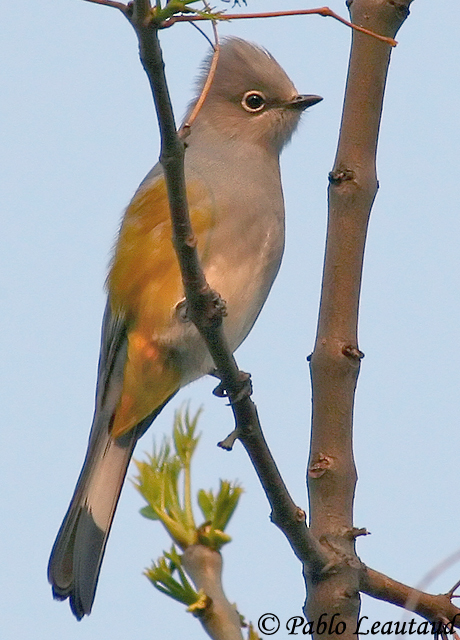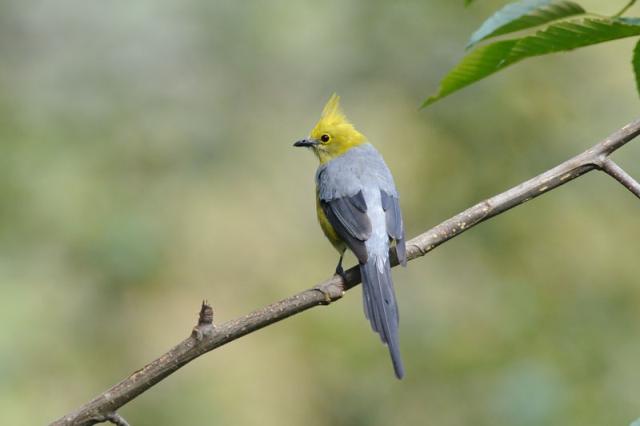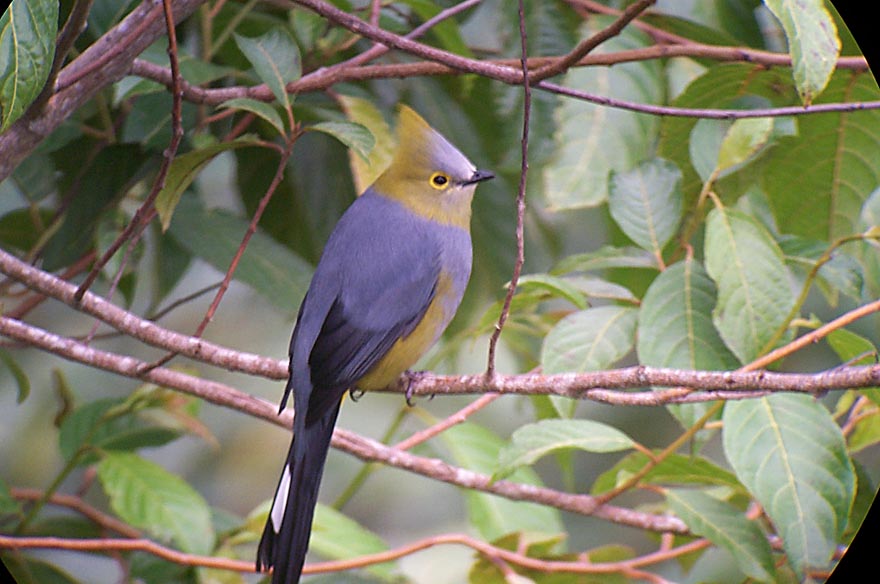
Ptilogonys cinereus
SUBFAMILY
Ptilogonatinae
TAXONOMY
Ptilogonys cinereus Swainson, 1827.
OTHER COMMON NAMES
English: Gray silky; French: Ptilogon cendrй German: Grauseidenschnдpper;
Spanish: Capulinero Gris.
PHYSICAL CHARACTERISTICS
7.3–8.3 in (18.5–21 cm). Sleek, long-tailed birds with crests
and small bills. Male’s head, crest, and upperparts blue-gray,
with white eye crescents and black wings. Belly white, black
tail has bright yellow undertail with a white band. Female head
and crest grayish, upperparts, throat, and underparts dusky
wine-colored with yellow undertail. Whitish belly. Juvenile resembles
female, but belly dull yellow.
DISTRIBUTION
Middle Americas. Throughout Mexico, south into Guatemala
at 3,300–11,500 ft (1,000–3,500 m), lower in winter. Documented
twice in Texas, sight records for southern Arizona.
Also seen in southern California, though may be an escape.
HABITAT
Humid to semi-arid pine-oak and evergreen forest, wanders to
adjacent habitats in winter.
BEHAVIOR
Commonly seen in pairs or small flocks; often perches conspicuously
atop tall trees; flies high. Call is chattering and nasal:
chi-che-rup, che-chep and k-lik, k-li-lik. Song a pleasant, soft,
warbled series of clucks with intermittent quiet whistles.
FEEDING ECOLOGY AND DIET
Diet mainly insects, often caught in flight, and fruits and berries.
REPRODUCTIVE BIOLOGY
Monogamous. Lays two bluish white eggs, speckled and spotted
with brown and gray, in cup-like nest of fine plant material
and lichen; nests in bushes or trees. Female incubates for
12–14 days, young hatch naked and blind. Nestlings are fed by
both parents and fledge in 18–20 days.
CONSERVATION STATUS
Not threatened.
SIGNIFICANCE TO HUMANS
None known.
Photo Gallery of - Gray silky flycatcher




 Animalia Life
Animalia Life